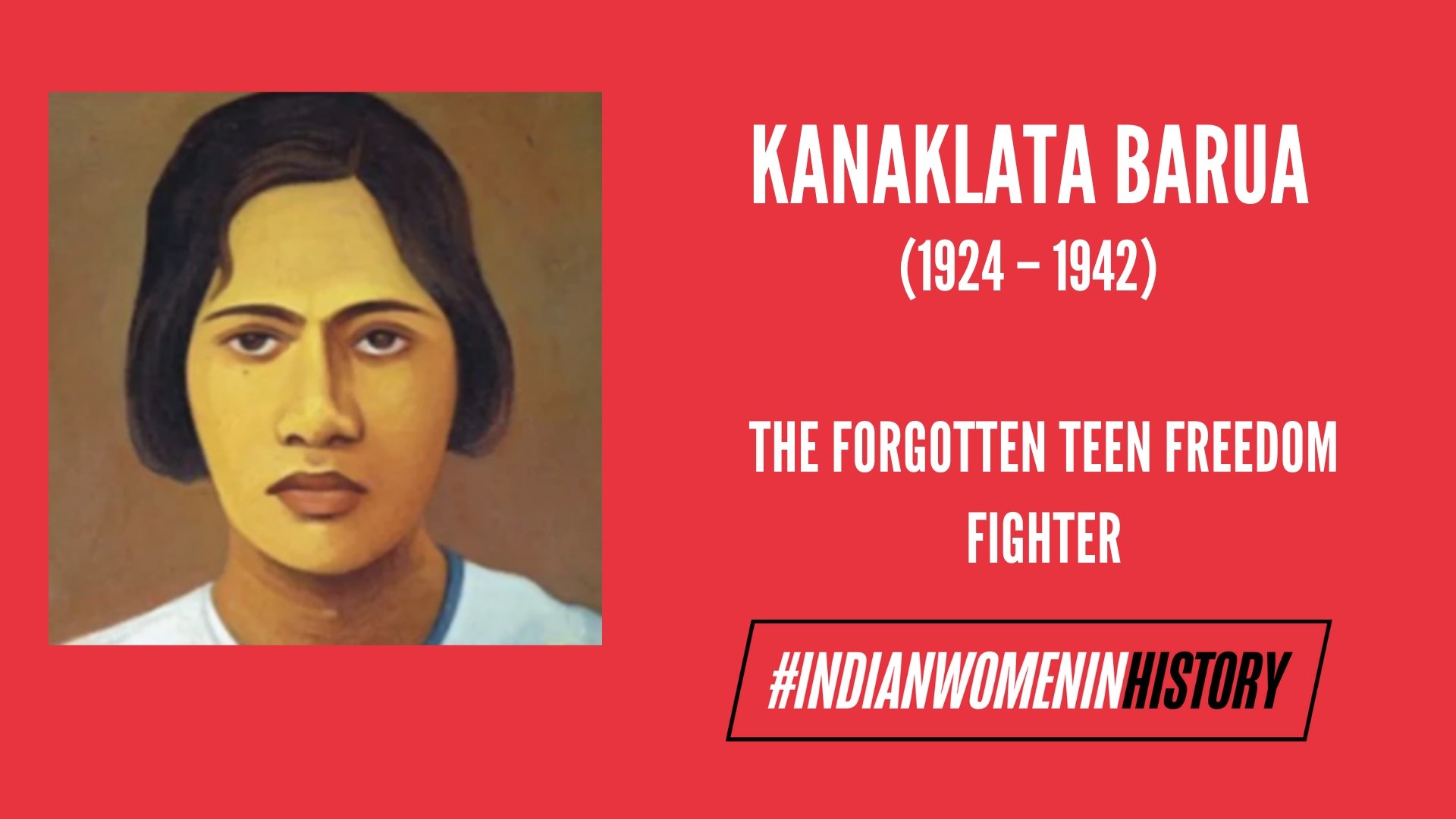India’s freedom struggle majorly speaks about the supreme sacrifices by men. When men were arrested during the struggle, a large number of women came out and took part in the movement. Indian history, to a great extent, spoke of the contribution of women in the mainstream such as Aruna Asaf Ali, Sarojini Naidu, Sucheta Kriplani and many more. However, a very few know about the sacrifice made by Kanaklata Baruah who attained martyrdom in her teens.
I first read about Birbala Kanaklata Barua when I was in school. Only a small paragraph was dedicated to her in our book on Assam history. Not much about her was known. After searching about her on the internet, it is disheartened to learn that there is only limited information about her. Lost in the pages of Assamese history, she is remembered as the youngest freedom fighter from Assam.
Early life
Born to Krishna Kanta Barua and Korneshwari Barua on 22nd December, 1924 at Barangabari village of Gohpur sub-division of Sonitpur district, Kanaklata Barua was the youngest freedom fighter from Assam. Inspired by Mahatma Gandhi’s Quit India movement, seventeen-year-old Kanaklata joined the movement. She wanted to join the Azad Hind Fauz, however, being a minor, she was not allowed to join and her dream remained unfulfilled.
Even before turning 18, she was subsequently made the leader of the women cadres of Mrityu Bahini.
She developed a sense of responsibility at the tender age of five when her mother passed away. After the death of the mother, her father remarried but he also died when she was thirteen. She dropped out of school after reaching the third standard to take up responsibilities of household and look after her siblings.
Freedom Struggle In Assam
After the horrifying massacre of 1919 in Jallianwala Bagh, the spirit of freedom movement spread nationwide and in 1921, the freedom movement took a new turn. Non-cooperation movement started throughout the country to persuade the British to grant Swaraj.
Also read: Kasturba Gandhi: The Lesser Known Freedom Fighter | #IndianWomenInHistory
This national outcry spread like a wildfire igniting the hearts of the people with patriotism and the sparks reached Assam too. The movement led to non-cooperation with the British that began in all fields, boycotting all social, political, economic and educational institutions. The movement was withdrawn after the Chauri Chaura incident.
In 1942, the activities of the freedom movement reached a climax and Gandhi launched “Quit India Movement with the call “Do or Die”. The patriotic waves of this national upsurge were felt in Assam too and there were widespread protests against the British rule.
In Assam, the movement against the British started in a peaceful manner but all the Congress leaders of Assam were arrested and the atrocities of the British on the people increased. This led the Congress to organize a suicide squad which indulged in subversive activities like derailing and burning trains, attacking army outpost and snapping communication channels.
The then president of the local Congress committee, Kushal Konwar was an ardent believer of non-violence proposed by Gandhi. He was falsely accused by the British for derailing a train which killed many British soldiers. He was hanged which led the revolutionists of Gohpur subdivision to remove the British flag and unfurl the Indian National Flag at all prominent places.
Role Of Kanaklata In India’s Freedom Struggle
Rejection by Azad Hind Fauz did not deter Kanaklata from joining India’s freedom movement
After the martyrdom of Kushal Konwar, the revolutionary camp of Gohpur division of undivided Darrang district decided to unfurl the National Flag at the local police station on 20th September, 1942 under the leadership of Jyoti Prasad Agarwala. On the other hand, Rebati Mahan Som, the officer in-charge of the police station was already prepared for such action by the freedom fighters.
Kanaklata, with the National flag in her hand, led the procession with the members of Mrityu Bahini. They were warned by the police not to proceed further or face grave consequences. When the officer threatened her that they would start firing if she moves forward, she told him to do his duty and she would carry on with hers.
Her story may not find many historians to narrate but through the valour and courage she displayed in her teens, she remains an inspiration for many.
Undeterred by the warning, the procession continued to move forward and police started firing at them. As a leader, Kanaklata was holding the flag, she was shot and still holding the flag making sure that the flag does not fall on the ground till Mukunda Kakoti, another member from the group took it from her.
While both Kanaklata and Mukunda succumbed to the police firing, their supreme sacrifice did not go in vain as the Tricolour was eventually unfurled at the police station, adding more fuel to the freedom movement.
This valiant act of Mrityu Bahini only strengthened India’s resolve to dethrone and further weaken England’s grip on the country before eventually the country gained independence on the 15th of August, 1947.
As a mark of respect to her heroics in the Freedom Struggle, the Fast Patrol Vessel ICGS of the Indian Coast Guard, commissioned in 1997 was named after Kanaklata Barua. Her story may not find many historians to narrate but through the valour and courage she displayed in her teens, she
Also read: Velu Nachiyar: The Tamil Queen Who Fought Away the British | #IndianWomenInHistory
Her story was retold in director Chandra Mudoi’s film, Epaah Phulil Epaah Xoril. The Hindi version of the movie, titled Purab Ki Awaz, was also released to reach a wider audience.
References
1 The Assam Tribune
2. Young Bites
3. Assam Info
4.Shodhganga
Indrani is a post graduate in sociology, who believes in substantive equality. She is an avid reader and a traveler. She is currently working as a Research Associate in a Satark Nagrik Sangathan, a right’s based NGO. You can follow her on Twitter.





Acharya Prashant has mentioned Kanaklata in this video.
https://www.youtube.com/watch?v=PDvZkzJIpkc&t=1024s